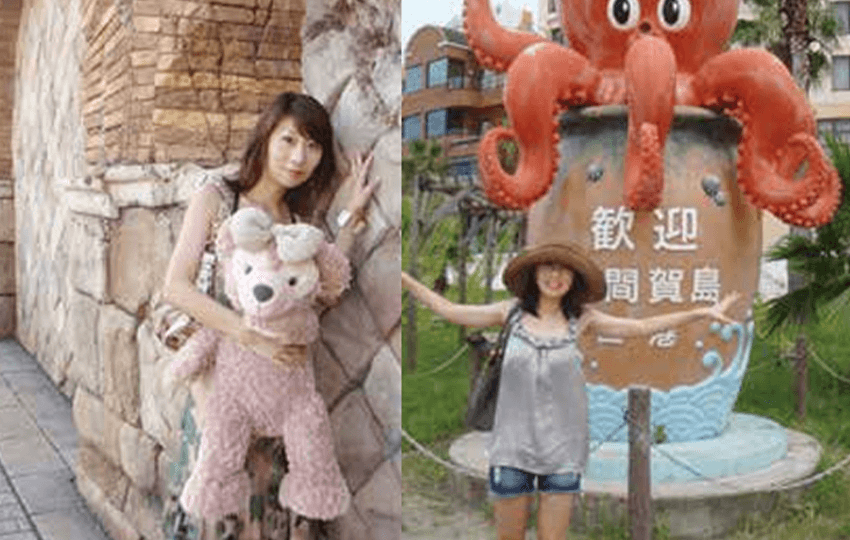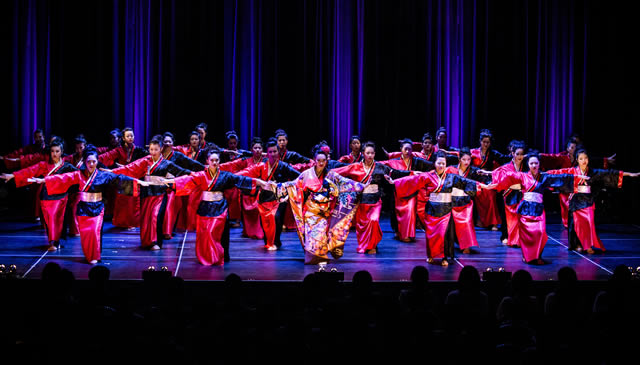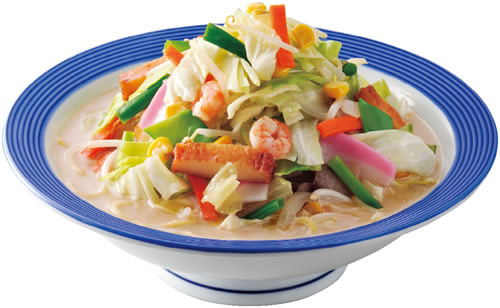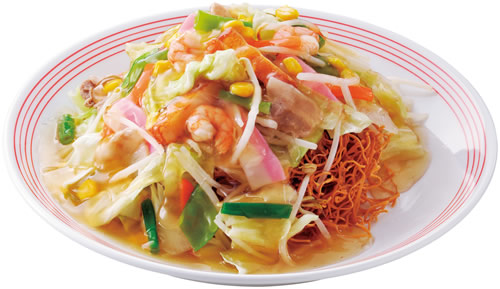-
[From February Issue 2015]
President of Minoh Brewery
OSHITA Kaori
Craft beer is attracting attention these days. The popular “Minoh Beer” was created in the pastoral city of Minoh, Osaka Prefecture. OSHITA Kaori is both company president and factory manager. “My mother and two younger sisters work with me. When I first helped out with the business, it felt like a part-time job as I was a student,” says Kaori. She was later drawn into the fun of beer making.
Minoh Brewery has won many major awards in Japan. Since 2009, it’s won awards six years in a row at international beer competitions. The success of this family run craft beer has been much discussed. Its international reputation has made this beer popular nationwide. “I could never have predicted that our Minoh Beer Stout would be chosen in the UK, the land of stout. It was quite a surprise. I was glad our longtime fans were also delighted,” says Kaori.
As the factory is small in size, it can only produce limited quantities, but great care is taken to brew the beer. Although beer production processes usually include filtration and heat treatment, Minoh Brewery does without them. “Bottling is done without filtering out the yeast. Freshness is the key, so we ship it cold and our customers also keep and sell it cold. Our beer is rich in vitamins and minerals, so it’s also beneficial for health and beauty,” says Kaori.
Minoh Brewery was founded in 1996 by Kaori’s father, OSHITA Masaji. It’s been 18 years since the company was established, and its owners have been through the ups and downs of the craft beer boom even to the extent that they had considered shutting down the business. Prominent in Japan’s craft beer industry, he sadly passed away two years ago.
Last year, a special beer to pay homage to Masaji’s memory was put on the market at the suggestion of a friend in the industry. This year, to mark the third anniversary of Masaji’s death, several companies produced beers bearing an image of him on them. Minoh Brewery itself released GOD FATHER3. “My father was a lively active man, everyone loved him. I’m glad he’s still remembered through beer.”
On the first floor of the factory cum head offices, there’s a tasting bar that can be visited for a fee. Neighbors can casually pop in here while taking a walk. Sometimes foreign tourists who have heard about the reputation of Minoh Beer also pay a visit. “We’ve been running this place since the company was established, because we’d like people to drink the beer as soon as it’s been made. Apart from our fixed holidays, we are open every day and at times it’s packed out,” says Kaori.
The company has been running a pub in Osaka City since 2004. “We aim to make Minho Beer something that can be easily enjoyed every day. It’s more fun if you think about which beer goes well with what kind of dishes,” says Kaori. “Real ale” matured in a barrel is served with a hand pump just like in a British pub.
They develop new products once every two months. “We have a wide range of some 120 types of beer. Some taste better if they aren’t too cold. I was inspired by foreign beers that used orange peel for our beer containing yuzu (a Japanese citrus fruit) from Minoh. I’d like to let more people know about the delicious taste of our different beers.” Kaori’s mission will continue into the future.
Minoh Beer Co., Ltd.
Text: KAWARATANI Tokiko[2015年2月号掲載記事]箕面ビール 代表取締役
大下香緒里さん
最近、地ビール(クラフトビール)が注目を集めています。自然豊かな大阪府箕面市で誕生して人気なのが「箕面ビール」。代表取締役と工場長を兼任しているのは大下香緒里さんです。「母と妹二人も一緒に働いています。最初にこの仕事を手伝った頃は学生だったので、アルバイト感覚でした」と香緒里さん。その後、ビールづくりのおもしろさに引きこまれます。
箕面ビールは国内の主要な賞を数多く受賞しています。2009年からは、世界のコンクールで6年連続金賞を受賞しました。家族企業の地ビールの快挙は、大きな話題になりました。世界的な評価を得たことが全国的な人気のきっかけです。「スタウト(黒ビール)の本場イギリスで、箕面ビールのスタウトが選ばれるとは予想していなかったので、驚きました。長年のファンも喜んでくれてうれしかったですね」と香緒里さん。
工場の規模が大きくないので生産量は限られていますが、手間を掛けたビールづくりをしています。ビールの製造工程ではろ過や熱処理することが多いのですが、箕面ビールはしていません。「酵母はろ過せずに、そのままびん詰めしています。鮮度が大切なため冷蔵で出荷し、納品先でも冷蔵して販売しています。ビタミンやミネラルが豊富なので、健康や美容にもいいですよ」と香緒里さん。
箕面ビールは1996年、香緒里さんの父、大下正司さんが始めました。創業から18年目になりますが、地ビールブームの浮き沈みを体験し、廃業を考えたこともあったと話します。正司さんは地ビール界を引っ張る存在でしたが、2年前に亡くなりました。
昨年、同業者の発案で正司さんを追悼するビールが発売されました。今年も三回忌に合わせて、正司さんをイメージしたビールが各社でつくられました。箕面ビールもGOD FATHER3を販売しました。「元気で働き者だった父は、皆からとても愛されていました。今でもビールを通して思い出してもらえるのはうれしいですね」。
工場兼本社の1階には、有料のテイスティングバーがあります。近所の人が散歩の途中に立ち寄る、気軽な場所になっています。評判を聞いた海外からの旅行客が訪れることもあります。「できたてを飲んでもらいたいと、創業時から続けています。定休日以外は毎日開けていますが、満席になってにぎわうこともありますよ」と香緒里さん。
2004年からは大阪市内に直営のパブを経営しています。「箕面ビールは、毎日気軽に楽しんでもらえるビールを目指しています。ビールと料理の相性を考えると、楽しさが広がりますよ」と香緒里さん。イギリスのパブのように、樽の中で熟成された「リアルエール」をハンドポンプで注いで提供しています。
2ヵ月に1度、新商品の開発も行っています。「ビールの種類は豊富で、約120種類あります。冷やしすぎない方がおいしく飲めるものもあります。箕面産のゆず入りのビールは、オレンジピールを使った海外のビールをヒントに考えました。様々なビールのおいしさを、広めていきたいですね」。香緒里さんの挑戦はこれからも続きます。
株式会社箕面ビール
文:瓦谷登貴子 -
Manufacturer of Japan’s First Dinner Set
- Hiragana Times
- Aug 12, 2015
[From February Issue 2015]
Noritake Co., Limited
Noritake Co., Ltd. (Nagoya City, Aichi Prefecture) is one of the world’s largest manufacturers of ceramic ware. Much of the tableware used in hotels and restaurants is manufactured by Noritake. The company is also known as a manufacturer of ornaments, such as vases, and dolls. The Noritake company name comes from the name of the place where the business was established.
The founder MORIMURA Ichizaemon set up a trading company called Morimura-gumi (today’s Morimura Bros., Inc.) in Ginza, Tokyo and sent his younger brother, Toyo to New York to open a Morimura Brothers general store there. At first, they imported Japanese curios and various Japanese-style products, but they eventually switched to mainly dealing in ceramic ware. In order to manufacture ceramic ware to sell in the store, in 1904 Morimura established Nihon Touki Goumei, Ltd. – the predecessor of Noritake Company.
Before that, Morimura visited the Paris Exposition of 1889 and, impressed by beautiful European porcelain, was determined to create his own. After returning to Japan, he and his business partner OKURA Magobe took up the challenge of developing European-style tableware out of local resources. After overcoming various difficulties, they managed to create Japan’s first dinner set in the company’s tenth year. The Noritake tableware they exported created a sensation. “Noritake China” became known throughout the world.
Companies founded by Nihon Touki that have since become independent, include Oriental Pottery (today’s TOTO), NGK Insulators, Ltd., and NGK Spark Plug Co., Ltd. Morimura entrusted the management of these companies to Okura’s son, Kazuchika. The four companies are all frontrunners in their respective fields in Japan.
There are various stages involved in the production of ceramic ware, including blending raw materials, casting, printing, firing and finishing. Having developed the necessary technology to complete each of these stages, Noritake Company’s subsidiaries have capitalized on their knowhow. For example: pigment developed for applying colored patterns is employed on electronic material used in solar batteries; kilns are also used to make materials used in the production of lithium-ion batteries; and finishing technology helped develop a grindstone business.
Noritake Company is thus not only known for being a world-class manufacturer of tableware, but is also involved in various other industries. Since tableware was no longer their core business, the company name was changed in 1981 from Nihon Touki to Noritake Co., Limited. In 2001, a project to commemorate the company’s 100th anniversary led to the creation of the Noritake Garden on the grounds of the company’s head office.
Open to the public, the Noritake Garden has become a place for city dwellers to relax in. Besides having over 6,000 trees, it also has a museum and art gallery. In addition it can be used as a temporary shelter in the event of a disaster. When he founded his first company, Morimura made a vow to “contribute to society through business.” It appears that his spirit lives on in the Noritake Garden.
Noritake Co., Limited
Text: ITO Koichi[2015年2月号掲載記事] 株式会社ノリタケカンパニーリミテド
株式会社ノリタケカンパニーリミテド
株式会社ノリタケカンパニーリミテド(愛知県名古屋市)は世界最大級の陶磁器メーカーです。ホテルやレストランなどではノリタケブランドの食器が多く使われています。花びんや人形などの置物を作る会社としても知られています。社名のノリタケは、創業地の地名からきています。
創業者の森村市左衛門は東京・銀座に森村組(現在の森村商事)という貿易会社をつくり、弟の豊をニューヨークに派遣してモリムラブラザーズという雑貨店を開きました。初めは日本から輸入した骨董品や和風雑貨などを並べていましたが、やがて、陶磁器をメインとする商売に変更します。この店で販売する陶磁器を作るため、森村さんはノリタケカンパニーの前身である日本陶器合名会社を1904年に設立しました。
それ以前に、1889年のパリ万博を視察して、欧州の美しい磁器に感動した森村さんは、自分で作る決心をしました。帰国後、事業のパートナーである大倉孫兵衛さんと共に国産の原料を使った洋食器の開発に挑みます。苦労を重ねた末、会社をつくって10年目に日本で初めてのディナーセットを完成。輸出したノリタケの洋食器は大変な評判を呼びました。「ノリタケチャイナ」は、世界中に広まりました。
日本陶器を基に分離独立した会社には、東洋陶器(現在のTOTO)、日本碍子(現在の日本ガイシ)、日本特殊陶業があります。森村さんはこれらの経営を大倉さんの息子の和親さんに任せました。4つの会社はそれぞれの分野のトップクラスです。
陶磁器作りには、材料を混ぜる、形を整える、模様をつける、焼く、仕上げるなど、さまざまな工程があります。ノリタケカンパニーは、各工程で培われた必要な技術を他の事業で活かしています。例えば、カラー模様をつける絵の具は太陽電池用の電子材料に利用。焼くための焼成炉はリチウムイオン電池の材料を作るのにも使われます。仕上げの技術は砥石事業を発展させました。
このようにノリタケカンパニーは世界的な食器メーカーとして知られるだけでなく、幅広い産業に関わりを持っています。事業の柱が食器ではなくなってきたため、1981年に社名を日本陶器からノリタケカンパニーリミテドに改めました。2001年には創立100周年記念事業の一環として本社の敷地内にノリタケの森をつくりました。
ノリタケの森は一般に開放されていて、市民の憩いの場になっています。6千本以上の樹木の他、ミュージアムやギャラリーなどもあります。災害発生時には一時避難場所としても使われます。森村さんは創業時に「事業を通じて社会に貢献する」と誓いました。ノリタケの森にはそんな森村さんの考えが生き続けているようです。
株式会社ノリタケカンパニーリミテド
文:伊藤公一 -
[From February Issue 2015]
RIO Tina
“When I wanted to learn a second foreign language, I decided to choose Japanese,” RIO Tina from China says. “Japan was one of the countries I found appealing. I found it interesting that Japan, while being a developed country, properly preserved its old traditions. In addition, Japanese and Chinese businesses are tightly bound together.”
After graduating from Shanghai University, Rio came to Japan in March 2008 and studied Japanese at Aichi International Academy in Nagoya City, Aichi Prefecture for two years. “It was a very productive two years. Not only was I able to study Japanese, but I was very satisfied with the level of support I received in my everyday life, which made my stay in Japan very secure,” says Rio.
By continuing to work a variety of part time jobs while going to school, Rio’s Japanese ability improved greatly. Wanting to further her Japanese studies, Rio enrolled in the junior year of Nanzan University Business Administration Department in 2010 and majored in management environment theory. “The joy of studying a language is that you can easily gauge how much you have advanced,” says Rio.
“I was glad when I was able to give directions around town to a Japanese person. In addition, I became able to properly articulate my thoughts in a sentence. When my composition won Takushoku University’s International Collaboration and International Understanding Award, I was very happy,” says Rio. “I think katakana is very difficult. Even when the word derives from English, I had a hard time as the pronunciation can be completely different. In addition, many names for people and places are read differently, which was puzzling.”
Rio says she loves everything about Japanese food. “I especially like white flesh fish, oyster, and sushi. I often go to the standing sushi restaurants. Also, I always admire Japan’s clean environment and the courtesy of its people.”
Rio now does sales work for a specialist food wholesaler in Tokyo. She is in charge of alcoholic beverages and corresponds with the major Japanese supermarket buyers. She uses Japanese at work and also English when dealing with imports. She says it is pleasant to suggest a product or sales space, while taking buyers’ interests into account.
“I don’t deal well with the crowds in Tokyo. Rush hour here reminds me of my hometown, Shanghai,” Rio says with a smile. To recharge her batteries after a stressful work week and to get away from the crowds, on her days off she drives to the beach or plays golf with friends and colleagues.
“There are many differences between China and Japan. In China it’s important to assert yourself strongly; you’ll lose out if you do not state your intentions in front of others. In contrast, in Japan it’s normal to state your opinion after assessing the situation. As they say in Japan, I feel it’s important to ‘read between the lines.’ At times people can be excessively sensitive to the moods of others, but it’s also a virtue,” Rio says.
Aichi International Academy[2015年2月号掲載記事]呂 天吟さん
「第二外国語を身につけたいと思ったとき、日本語にしようと思いました」と中国出身の呂天吟さんは話します。「日本は魅力的だと思う国の一つでした。先進国でありながら、昔の文化などをきちんと保っているところが興味深いと思ったからです。また、日本と中国のビジネスは切っても切れない関係です」。
呂さんは上海大学を卒業後、2008年3月に来日。愛知県名古屋市にある愛知国際学院で2年間日本語を勉強しました。「とても充実した2年間でした。日本語の勉強だけでなく、生活面のサポートも満足いくものでしたので、来日間もない私にとってとても頼りになる存在でした」と呂さん。
学校に通いながら様々なアルバイトを続け、呂さんの日本語能力は大きくのびました。さらに日本語で勉強したくなった呂さんは、2010年、南山大学経営学部3年に編入、経営環境論を専攻しました。「語学の楽しさは自分がどのくらい成長しているかすぐ確認できるところです」と呂さん。
「街で日本の方に道案内ができたときにはうれしかったです。また、自分の思いをきちんと文章にすることができるようになりました。作文が拓殖大学の国際協力・国際理解賞を受賞したときは本当によかったと思いました」と呂さん言います。「大変だと思うのはカタカナです。英語が由来のものでも発音が全然違うと苦労しました。また、人名や地名では変わった読み方が多く、戸惑いました」。
呂さんは和食すべてが好きと話します。「特に白身魚、カキ、おすしが好きです。立ち食いすし店にはよく行きます。また、きれいな環境と人の礼儀正しさにはいつも感心しています」。
現在、呂さんは東京にある食品専門卸の会社で、営業の仕事をしています。担当は酒類で、日本の大手スーパーマーケットのバイヤーとやり取りをしています。仕事では日本語を、輸入先によっては英語を使っています。バイヤーの声を常に聞きながら、商品や売場の提案をするのは楽しいと話します。
「東京の人混みはちょっと苦手です。ラッシュ時は地元、上海を思い出します」と笑います。仕事と人混みの疲れを癒すため、休日は友達や会社の同期の人とドライブで海へ行ったり、ゴルフに行ったりしています。
「中国と日本の違いはたくさんあります。中国は自己主張が強く、人より先に意志表示しないと負けになります。一方、日本は状況を見てから意見を言うことが一般的です。いわゆる『空気を読む』ことが大切と感じます。過剰なほど相手の気持ちを気にするところもありますが、それも美徳の一つだと考えています」と呂さんは話します。
愛知国際学院 -
[From February Issue 2015]
AKIRA
OTOMO Katsuhiro’s masterpiece is regarded as a work that revolutionized the medium of manga in Japan. It introduced a variety of techniques: detailed and realistic depictions; and the effect of a spherical impact in the ground when supernatural powers are used. It was serialized in the weekly publication Young Magazine from 1982 through to 1990. The 1988 animated feature film was a big hit just like the manga. Currently, a live action film adaptation is in progress in Hollywood.
In December, 1982, a new and unidentified type of bomb explodes in the Kanto area. Triggered by the collapse of Tokyo, World War III begins. Skipping forward 37 years to 2019, the new capital of “Neo Tokyo” stands in Tokyo Bay. While it appears to have regained its prosperity, an unstable situation continues with anti-government guerrillas opposing the police and the military.
With the Tokyo Olympics to be held the following year, redevelopment of the neglected old city is due to begin. While KANEDA Shotaro is driving down the highway towards the old city with his motorcycle gang, a strange boy with white hair and a wrinkled face suddenly appears on the road before him. SHIMA Tetsuo, who is a member of the gang, is severely injured when he swerves out of the way.
The boy disappears into thin air right in front of Kaneda. Tetsuo is not hospitalized, but is admitted to a military facility where a series of tests proves that he has dormant supernatural powers. Kaneda meets the boy again by chance and witnesses his mysterious powers. The guerrilla army is investigating supernatural research and abducts the boy from the military facility. Soon Kaneda and Tetsuo come close to discovering the secret behind the government’s supernatural power development project.
Before the breakout of World War III, a project to develop supernatural powers in humans got underway. Children with artificially developed abilities were called Numbers. However, the abilities of Akira – one of these Numbers – accidentally destroyed Tokyo. The real identity of the new kind of bomb was Akira. After this, the military continued to suppress Akira.
Desiring this incredible power, Tetsuo forcibly wakes Akira. The government and the military are at odds over the issue of Akira. Guerilla forces and new cults also get involved and a struggle ensues. In the midst of this chaos, Akira again unleashes his powers and Neo Tokyo is demolished. Tetsuo absorbs Akira’s powers and builds his Great Empire of Tokyo on the ruins of Neo Tokyo.
With Akira by his side, Tetsuo’s powers rapidly develop. To compensate, his body undergoes a strange mutation. Kaneda stands in the way of the suffering Tetsuo. Should Tetsuo – who has started to become a monster with his powers going out of control – be destroyed or saved? Does Akira, who sympathizes with Tetsuo, finally end up destroying the Earth? The curtain rises on the final battle. This work continues to exert an influence in all kinds of media.
Text: HATTA Emiko[2015年2月号掲載記事]AKIRA
日本のまんが表現を変えたと評される大友克洋の代表作。緻密でリアルな描写や、超能力を使う場面で地面が球状にへこむ演出など、それまでなかった手法を持ち込んでいます。1982年から1990年まで週刊ヤングマガジンで連載されました。1988年に制作された劇場版アニメは、まんがと同様に大ヒット。現在、ハリウッドで実写映画化が進行しています。
1982年12月、関東地方で正体不明の新型爆弾が爆発。東京の崩壊をきっかけに、第3次世界大戦が起こります。それから37年が経った2019年、東京湾上には新首都「ネオ東京」が建設されています。繁栄を取り戻したかのように見える一方で、反政府ゲリラが警察や軍隊と対立する不安定な状態が続いています。
翌年の東京オリンピック開催を控え、放置されていた旧市街でも再開発工事が開始されようとしていました。金田正太郎が、暴走族仲間と旧市街へ向かうハイウェイをバイクで走っていたところ、年老いた顔で白髪の奇妙な少年が突然路上に現れます。仲間の一員である島鉄雄は、彼をよけきれず重傷を負います。
金田の目の前で少年は消えてしまいます。鉄雄は病院ではなく軍の施設に収容され、検査の過程で超能力が目覚めたことが判明します。偶然に少年と再会した金田は、彼の持つ不思議な力を目撃します。少年は、超能力研究を探るゲリラが、軍の研究機関から連れ出した超能力者でした。やがて金田と鉄雄は、政府が行っていた超能力開発プロジェクトの秘密に近づいていきます。
第3次世界大戦が起こる前から、人体実験により超能力者を造り出すプロジェクトが進められていました。人工的に能力を開発された子どもたちは、ナンバーズと名付けられました。しかしナンバーズの一人だったアキラの能力が暴発し、東京を消滅させてしまいます。新型爆弾の正体はアキラだったのです。それ以来、軍はアキラを封印し続けていました。
強大な力を求める鉄雄はアキラを強引に目覚めさせます。アキラを巡って政府と軍は対立。ゲリラや新興宗教教団まで入り乱れ、争奪戦が繰り広げられます。混乱した状況の中でアキラが再び能力を解放、ネオ東京は崩壊します。アキラを手に入れた鉄雄は、廃墟となったネオ東京に大東京帝国を築き上げます。
アキラをそばに置くうちに、鉄雄の能力は急激に成長します。その代償として、肉体が異常に変化していきます。苦しむ鉄雄の前に、金田が立ちはだかります。能力が暴走し、体も怪物化し始めた鉄雄を倒すのか、救うのか。暴走する鉄雄に共鳴するアキラは、ついに地球を滅ぼしてしまうのか。最後の戦いが幕を開けます。影響を受けた作品が、メディアをまたいで今も生み出されています。
文:服田恵美子 -
[From January Issue 2015]
Hector DOMINGUEZ
Ambassador for the Dominican Republic
When I was in the Dominican Republic, I had the impression that Japan was a great country with both political and economic power. In 2013, I’d received an offer from our President to be posted as ambassador to a different country, but I personally told him I wanted to go to Japan. If I had gone to a country in South America, my connections and language skills would have made things easier, but sensing that there was a potential for trade with Japan to grow, I took up the challenge.
Since I arrived, my impression of Japan has improved even more. The buildings and railways are good, but above all else, I thought that the people were wonderful; everyone is modest and very polite. I highly value that.
I like all Japanese food. It’s healthy. I would probably be slimmer if I only ate Japanese cuisine. My wife and I often go out to Japanese restaurants and whenever we have guests from our country, we take them to eat out. They all appreciate the variety and delicious taste of Japanese cuisine.
I’ve visited many parts of Japan in my first year here. I liked them all. I discovered two positive aspects of Japan while traveling to those places. Firstly, marvelous historical landmarks, such as castles and old houses, have been preserved. Secondly, wherever you go in the country, there’s always a modern infrastructure.

The place I’m now interested in visiting is Hokkaido. I want to go and see the snow, which we don’t have in our country. I also want to see more of Tokyo. I want to go to places like Asakusa, to get in touch with its artistic and cultural side.
I think Japanese people are passionate about maintaining the cleanliness of their cities. That’s great. Nothing is particularly problematic for me in Japan. The lifestyle is very convenient. My only regret is I came here with my wife. Joking aside, I think Japanese women are graceful and very attractive.
I believe that Japan and the Dominican Republic have two things in common. The first thing is the people. The people of both countries do their best each day to fulfill their ambitions. The second thing is baseball. Japan and the Dominican Republic are the only countries that have been world champions in the World Baseball Classic tournament. The Dominican Republic is the current champion.
I believe our two countries will in the future become closer, not only through trade, but also through scientific, cultural, and political exchanges. Prime Minister ABE has made statements to the effect that he is paying particular attention to Latin America. We’re hoping to strengthen ties with Japan. There are many Dominican companies that want to do business with Japan.

The year 2014 is the 80th anniversary of diplomatic relations between Japan and the Dominican Republic. To commemorate this we have organized all kinds of events. The year 2015 will mark the 80th anniversary of diplomatic relations between Japan and the five countries of Central America (Guatemala, El Salvador, Honduras, Nicaragua and Costa Rica). We Dominicans intend to play our part as a member of the Central American Integration System.
The most attractive feature of the Dominican Republic is its people. We are all open-minded and hospitable to foreigners. Our country receives the greatest number of tourists in the Central American and Caribbean area. Our population is about ten million and we receive about five million tourists a year. So that we’ll have more tourists from Japan, I’m working hard to develop ties with companies in Japan’s tourism industry.
The Dominican Republic occupies the largest portion of the Caribbean island of Hispaniola. The climate is pleasant all year round. Superb beaches and beach resorts are dotted along the whole coastline. It’s so beautiful that it’s been likened to “a piece of blue sky.” Legend has it that when he arrived in Hispaniola in 1492, COLUMBUS remarked, “I bet no one has ever seen such natural beauty.”

Our country is rich in natural resources such as nickel and bauxite. Our GDP comes from tourism, agriculture and mining, and 4% of this is invested in education. Education is the key to a country’s development. We learned that from Japan.
I once appeared in a TV commercial that was shown in Daiei – a Japanese supermarket. It was advertising mangos from the Dominican Republic. On the subject of food, I should say that our tropical fruits – mango and bananas and so forth – are very delicious and so are our avocados, honey and casabe crackers.
Please everyone go and visit the Dominican Republic, the most beautiful country in the world. Once you go there, you’ll certainly be captivated. We’ll be waiting for you.- Dominican Republic Embassy
- Courtesy of Happo-en
Interview: KONO Yu[2015年1月号掲載記事]
ドミニカ共和国大使
エクトル・ドミンゲスさん
私がドミニカ共和国にいた頃の日本の印象は、政治的にも経済的にも大国で、偉大な国だということでした。2013年に大統領から、他の国への大使赴任の話をいただいていましたが、日本へ行きたいと直訴しました。南米諸国への赴任なら、今までの人間関係があり言語的にも楽だったでしょうが、私は日本との貿易がこれからもっと活発になる可能性を感じ、チャレンジしたかったのです。
来日してからの印象はますますよくなりました。建物、鉄道などもいいですが、何よりも人が素晴らしいと思いました。皆さん謙虚で非常に礼儀正しいです。このことはとても価値があると私は考えます。
日本食はどれも大好きです。健康的ですね。日本食だけ食べていたら、私はもっとスリムになることができるでしょう。日本食レストランには家内ともよく行きますし、本国からお客様が来るときには必ず連れて行きます。日本食はバラエティーがあり、おいしいと皆さんに好評ですよ。
私は赴任してからの1年間で、いろいろな地域へ行きました。行ったところは全て好きです。各地に行って思った日本のよさは、2つあります。1つ目は、城や住居をはじめ、伝統的な素晴らしい物が残されている点。2つ目は、近代的なインフラが全国どこへ行ってもちゃんと備わっていることです。今行ってみたい場所は北海道ですね。私の国にはない、雪を見に行きたいです。また、東京ももっと回ってみたい。浅草などへ行って芸術や文化的な面にふれてみたいで
すね。
日本人は自分たちの街を大切にきれいに保つという熱意があると思います。それは素晴らしいことです。日本で困ったことは、特にありません。暮らすには、とても便利です。唯一あるとすれば、奥さんを連れてきてしまったことでしょうか。冗談はさておき、日本の女性は優美で本当に魅力的だと思います。
日本とドミニカ共和国の似ているところとしては、2つあげられると思います。1つ目は人です。両国とも向上心があり、日々努力していること。2つ目は、野球ですね。WBCで世界チャンピオンになった国は、日本とドミニカ共和国だけです。今はドミニカ共和国がチャンピオン
です。
両国は、今後、貿易だけでなく、科学、文化、政治などでももっと距離が縮まり、緊密になると信じています。安倍首相もラテンアメリカに注目していると発言されていますよね。我々も日本との関係が深くなることを望んでいます。日本と取引したいドミニカ共和国の企業も多いのですよ。2014年はちょうど日本とドミニカ共和国の外交関係樹立80周年で、私たちは様々なイベントを行いました。2015年は、中米5ヵ国(グアテマラ、エルサルバドル、ホンジュラス、ニカラグア、コスタリカ)が外交関係を結んで80周年です。我々ドミニカ共和国も中米統合機構のメンバーとして協力したいと思っています。
ドミニカ共和国の一番の魅力は、とにかく人です。みんなオープンで、外国人をあたたかく迎えます。中米とカリブ地域の中では一番の観光客の受入国です。ドミニカ共和国は、人口は約1千万人ですが、年間に約500万人の観光客を受け入れています。私は日本からの観光客増加のために、日本の観光業者と協力関係を結べるようつとめています。
ドミニカ共和国は、カリブ海に浮かぶイスパニョーラ島の多くを占めています。一年中快適な気候ですし、全土の海岸に最高のビーチリゾートが点在しています。その美しさから、「天空のひとかけら」と例えられています。1492年に、コロンブスがイスパニョーラ島に到着したとき、「これほど美しい自然を、まだ誰も見たことがないだろう」と言ったといいます。ニッケルやボーキサイトなど資源が豊富です。我々は観光や農業、鉱業で成り立つGDPの約4%を教育に投資しています。国の発展には人が大事ですからね。それは日本から学びました。
実は私、日本のスーパー、ダイエーのCMに出演したことがあります。ドミニカ共和国のマンゴーのプロモーションでした。食べ物に関して言えば、マンゴーやバナナなどの南国フルーツの他、アボカドやハチミツ、そしてカサベと呼ばれるクラッカーもとてもおいしいですよ。
世界で最も美しい国、ドミニカ共和国に、皆さんぜひいらしてください。一度いらっしゃったらきっと魅了されてしまうと思います。お待ちしています。- ドミニカ共和国大使館
- 協力:八芳園
インタビュー:河野有
-
[From January Issue 2015]
Horse race tracks, pachinko parlors, motorboat race tracks… all of these are places where the majority of visitors are male. Recently, these kinds of facilities are devising various schemes to increase female custom. For example, Boat Race Edogawa holds art tours to show off the facility’s art collection.
During the tour, a guide accompanies customers around the Art Museum located in the facility. The combination of a motorboat race venue and art is surprising and SUZUKI Kenji, who is in charge of this Art Museum, talks about how the art collection increased: “About seven or eight years ago, we began decorating the dreary reserved seating area with object d’art.”
The tour of the works scattered around the hall began in 2010. In 2012, when the collection increased and it became difficult to travel round the hall on foot, an Art Museum was established to bring the artworks together in one place. Currently, the museum houses many works, including pieces by Muttoni – known for his mechanical dolls – and FUKAHORI Riusuke – who creates three-dimensional goldfish with acrylic resin. The museum is highly regarded for its large collection of valuable modern art.
The tour costs 1,500 yen including lunch. It’s also possible to watch races from reserved seats, which usually cost 2,000 yen. The tour does not make a profit, but Suzuki says, “A boat racetrack is a difficult place for a casual visitor to drop in on. We hope that this tour will provide a different way in for those visiting our boat racetrack.”
The impression that this is a male dominated place with a rough atmosphere has been successfully changed, with some tour participants remarking, “Is this really a boat race track?” The art tour only takes place on boat race days and is by reservation only. Numbers are limited to ten people per day. Since the artwork can only be seen by participating in the tour, bookings are always made on holidays.

Considered to be mostly full of male customers, pachinko parlors also hope to attract more female visitors, particularly housewives. This is because the regular pachinko crowd is on the decline. Eyecandy Co., Ltd. specializes in designing pachinko parlor restrooms and gift exchange counters for women. All the employees are women, which is unusual in the male dominated pachinko industry.
Originally the company created pachinko hall advertisements, but came to deal in interior decor at the request of the parlors. The parlors particularly want housewives in their 50’s and 60’s to visit. However, the interior decoration, being rather gaudy, does not create a tranquil atmosphere. “Because we want to create a space for women to shine, we intentionally avoided age-appropriate designs,” says the CEO, FUKUMORI Kanae.
Devices that appeal to the customers’ inner girl have been installed; for instance “actress mirrors” in the powder room create a flattering reflection. The designs suggested by Eyecandy Co., Ltd. were sometimes ridiculed by other competitors when the company was bidding for an interior design contract. However, its bid was successful and after the refit was complete, it was popular with female customers. Other halls have altered their interior decor to be more appealing to women after seeing this response.Text: ICHIMURA Masayo[2015年1月号掲載記事]
競馬にパチンコ、競艇……いずれも客層のほとんどが男性の場所です。最近ではこうした施設が女性客を増やそうと様々な工夫をしています。例えば、ボートレース江戸川では施設内にあるアートコレクションを見るためのアートツアーを実施しています。
ツアーでは施設内にあるアートミュージアムをガイド付きでまわります。競艇場とアートの組み合わせは意外ですが、「7~8年前に殺風景だった指定席を華やかにしようとオブジェなどを置き始めたのがきっかけです」とアートミュージアム担当の鈴木健氏さんはアート作品が増えていった経緯を話します。
館内に点在する作品を見てまわるツアーを始めたのは2010年です。その後作品の数が増えたこと、また館内を歩いて一周するのが大変だということから、2012年には作品を一ヵ所にまとめたアートミュージアムをつくりました。現在収蔵されているのは機械仕掛けの人形で知られるムットーニやアクリル樹脂で金魚を立体的に表現する深堀隆介の作品などです。価値ある現代アートが多数展示されていることでも評価されています。
ツアーはランチ代込で1,500円です。通常利用料が2,000円かかる指定席で、レースの観戦もできます。このツアーでの利益は出ていませんが、鈴木さんは「ボートレース場はふつうのお客様がふらりと立ち寄るには敷居の高い場所です。ボートレース場に足を運ぶ違う切り口となればいいと考えています」と言います。
ツアー参加者からは「ここがボートレース場?」という感想が多く、男性が多く荒々しいというイメージを変えることに成功しています。アートツアーはボートレースのある日のみの実施で、一日10名までの完全予約制です。作品はツアーに参加しないと見られないということもあり、休日は常に予約が入っている状態です。男性客が多い印象のパチンコ店も、女性客、特に主婦層に足を運んでほしいと考えています。パチンコ人口が減少傾向にあるからです。アイキャンディ株式会社は、パチンコホールの休憩室や景品の交換カウンターを女子向けに特化してデザインしています。男性中心のパチンコ業界では珍しく、社員はすべて女性です。
元々はパチンコホールの広告を作る会社でしたが、店の依頼で内装を手掛けるようになりました。店舗がより多く足を運んでほしいと考えているのは50~60代の主婦です。しかし、内装は落ち着いた雰囲気のものではなく、華やいだデザインです。「女性が、自分が輝いていると思える空間にしたいので、あえて年相応のデザインにはしないようにしています」と代表取締役の福森加苗さんは話します。
パウダールームには、映った人がきれいに見える『女優ミラー』を導入するなど乙女心をくすぐる仕掛けを施しています。アイキャンディが提案するデザインは、内装の業務を請け負うコンペで同業他社から笑われたこともありました。しかし、コンペを勝ち抜き、実際に設置したところ女性客からは好評でした。そうした反応を見て店舗を女性向けに変える店が増えています。文:市村雅代
-
[From January Issue 2015]
Tokyo Traditional Arts Program
Launched in 2008 by the Tokyo Metropolitan Government and the Tokyo Metropolitan Foundation for History and Culture, “Tokyo Traditional Arts Program” is part of the Tokyo Culture Creation Project. In Tokyo there remain numerous performing arts traditions. The scheme aims to hand down these skills to future generations.
This year, three major events took place: Traditional Arts Performances, Traditional Performing Arts for Kids, and Tokyo Grand Tea Ceremony 2014. The content of the programs is specifically chosen with an emphasis on making traditional performing arts welcoming and accessible. At Traditional Arts Performances, for example, a show called “Japanese Comedy Traditional and Contemporary” was held. Kyogen actors and comedians perform together and explore the differences and similarities between classic and modern comedies.
Traditional Performing Arts for Kids operates training programs. Children choose their favorite art from options such as Noh, Japanese dancing; shakuhachi (bamboo flute)and shamisen (Japanese guitar). They then receive lessons directly from top-notch artists. At the end of the program, they have a public show. MORI Ryuichiro, a public relations director of Tokyo Culture Creation Project says: “Learning traditional performing may feel awkward. But these programs offer seven months of intensive training so they can learn in a relaxed atmosphere.” So far, some 1,800 children have participated in these programs.
Mori says he wants students to get a sense of the value of Japanese culture through these programs; that nothing similar can be found in the rest of the world. “Practiced continuously for 600 years, the art of Noh is an aural tradition that has been handed down through imitation. Registered by UNESCO as an Intangible Cultural Heritage, it’s the world’s oldest performing art tradition still in existence. By experiencing such Japanese traditional performing arts, they will hopefully develop a sense of respect for Japanese culture.”
Mori says that one characteristic of Japanese traditional performing arts is that they are linked to ordinary people’s everyday lives. “In Japan, Noh stages can be found in the countryside, and kabuki is performed in some farming villages.” Nagauta (long epic songs), kouta (ballads) and the shamisen were popular accomplishments amongst the merchant classes in the Edo period. Bon odori dances held in summer throughout Japan are also a traditional performing art.
The Tokyo Olympics, scheduled to be held in six years, will be a great opportunity to promote traditional performing arts in Tokyo. “In the Olympics, the host city is expected to hold cultural and educational programs. We’re still deciding what we’re going to offer, but there will be many opportunities for people to immerse themselves in traditional arts. Rather than just watching professional performances, for a more direct experience, I want people from abroad to informally participate in bon dancing.”Text: ICHIMURA Masayo[2015年1月号掲載記事]
東京発・伝統WA感動
2008年から東京都と東京都歴史文化財団が東京文化発信プロジェクトの一環として行っているのが「東京発・伝統WA感動」というプロジェクトです。東京にある数多くの伝統芸能を次世代に伝えることが目的です。
今年は伝統芸能公演、キッズ伝統芸能体験、東京大茶会2014の3つの事業が実施されました。プログラムの具体的な内容は、親しみやすく、伝統芸能の入口となるものを意識して決められます。例えば、伝統芸能公演では「日本の笑い―古典と現代」が催されました。狂言師とお笑い芸人が共演し、昔の笑いと現代の笑いの異なる点、似ている点を探るというものです。
キッズ伝統芸能体験では稽古プログラムを実施しています。子どもたちは、能、日本舞踊、尺八、三味線などから自分の好きなコースを選び、一流の芸術家から直接指導を受けます。最後には発表会もあります。「伝統芸能に入門するのは敷居が高いと思うかもしれません。でもこのプログラムなら気軽に、また、7ヵ月間で集中的に稽古することができます」と東京文化発信プロジェクト室広報調整担当課長の森隆一郎さんは話します。これまでに約1,800人の子どもたちがこのプログラムに参加しましした。
これらのプログラムを通じて日本の文化は世界でも珍しい貴重なものであることを感じてもらいたいと森さんは言います。「能は600年間途絶えることなく口頭で技術を教え、振り写しで演じ続けられてきました。現存するものでは世界で一番古い芸能で、ユネスコの無形文化遺産にも登録されています。そうした日本の伝統芸能にふれることで日本の文化を尊敬する気持ちが生まれるのではないでしょうか」。
森さんは日本の伝統芸能の特徴は、一般人の生活と地続きであることだと言います。「日本ではいなかに能の舞台があったり、農村で歌舞伎を行っていたりしますよね」。長唄や小唄、三味線なども江戸時代には町人に人気の稽古事でした。夏に日本各地で行われる盆踊りも伝統芸能の一つです。
6年後に予定されている東京オリンピックは、東京の伝統芸能を発信する絶好の機会です。「オリンピックでは開催地で文化や教育のプログラムを実施することが決められています。内容はこれからですが、伝統芸能は気軽に参加できるものも多いです。海外から来た方も町の盆踊りにちょっと参加してみるなど、プロが演じるものを鑑賞するだけでなく、ぜひ体験してほしいですね」。文:市村雅代
-
[From January Issue 2015]
This is the world’s first public museum of bonsai art. Seasonal bonsai are exhibited inside the museum building and in the garden. Audio guide devices in Japanese, English, Korean and Chinese are available to rent. Many workshops and themed exhibitions are organized here. Paintings to celebrate the New Year will be on display from December 13 to January 21, 2015. Around the museum, six bonsai gardens are located, where you can enjoy bonsai throughout the day.
Access: five minute walk from the east exit of Toro Station on the JR Utsunomiya Line
Opening hours:
November – February: 9:00 a.m. – 4:00 p.m.
March – October: 9:00 a.m. – 4:30 p.m.
Admission for the general public: 300 yen
Closed days: every Thursday and December 29 – January 3
The Omiya Bonsai Art Museum, Saitama [2015年1月号掲載記事]世界で初めての公立盆栽美術館。館内と庭園には、季節ごとの盆栽を展示。音声ガイド(日本語、英語、韓国語、中国語)の貸し出しが可能(有料)。ワークショップや、企画展示もたくさん開催している。12月13日から2015年1月21日には、お正月を祝う絵画なども展示。美術館周辺には6軒の盆栽園があり、1日中盆栽が楽しめる。
交通:JR宇都宮線土呂駅下車東口より徒歩5分
開館時間
11月~2月:午前9時~午後4時
3月~10月:午前9時~午後4時30分
一般料金:300円
休館日:木曜日、年末年始(12月29日~1月3日)
さいたま市大宮盆栽美術館 -
[From January Issue 2015]
“Champon” is a dish of pork, seafood and vegetables cooked together in a soup. Including its overseas branches, there are more than 650 “Nagasaki Champon Ringerhut” stores. In addition to smaller sized champon served with plenty of vegetables, there are a wide range of varieties available to choose from. Popular too are gyouza (fried dumplings) that have a casing made from a mixture that contains rice powder. Flour, rice powder and vegetables are all made in-house. No preservatives or artificial colors are used. A set menu is also available for children.
[No. 1] Plenty of Vegetables Champon 680 yen
A 480 gram serving of seven kinds of vegetables are used in this champon. Compared to regular Nagasaki champon, double the quantity of cabbage, bean sprouts, and onion is used. A bowl of this champon provides the correct amount of vegetables (350 grams) a person needs per day.

[No. 2] Nagasaki Champon 540 yen
This standard dish at Ringerhut is made with 255 grams of vegetables. Many people order this dish together with gyouza.

[No. 3] Nagasaki Sara Udon 580 yen
Together with Nagasaki champon, this is one of the company’s trademark dishes. Slathered in a thick starchy sauce, this dish is poured onto a bed of deep-fried crispy thin noodles.

Prices quoted are for eastern Japan.
Nagasaki Champon Ringerhut[2015年1月号掲載記事]ちゃんぽんとは豚肉や魚介類、野菜をめんと一緒にスープで煮た料理。「長崎ちゃんぽんリンガーハット」は、海外を含め670店舗以上を展開している。小さいサイズや野菜たっぷりなどさまざまな種類を選べるのが特徴。米粉をブレンドした皮を使ったぎょうざも人気。使用している小麦粉、米粉、野菜はすべて国産で、保存料や合成着色料は使っていない。小さな子ども向けのセットメニューもある。
【No.1】野菜たっぷりちゃんぽん 680円
7種類480グラムの野菜を使用したちゃんぽん。キャベツ、もやし、玉ねぎは長崎ちゃんぽんの2倍使っている。一日に必要な野菜の量(350グラム)以上のものがこれ一杯でとれる。
【No.2】長崎ちゃんぽん 540円
リンガーハットの定番メニューで、255グラムの野菜を使っている。ぎょうざと組み合わせて頼む人が多い。
【No.3】長崎皿うどん 580円
長崎ちゃんぽんと並ぶ看板メニューの一つ。香ばしく揚げたパリパリの極細麺に熱々の野菜あんがとろりとかかっている。
値段は東日本エリアの価格
長崎ちゃんぽんリンガーハット -
[From January Issue 2015]
NISHIHATA Seijun, Plant hunter
There is a plant hunter who collects plants not only from within Japan, but also from all over the world. NISHIHATA Seijun grows plants from the thousands of seeds he has collected. Based in Tokyo, he is attracting attention in the media – TV, radio, magazines, and so forth – for the numerous projects he began in 2012.
Seijun says he hasn’t always been interested in plants. When he was studying abroad aged 21, an incident occurred that changed his mind. “When I climbed the 4,000 meter high Mt. Kinabalu in Borneo, I happened to see Nepenthes rajah, the world’s largest carnivorous plant on the summit. That plant made a huge impression on me.”
Hanau Co. Ltd. in Hyogo Prefecture is a wholesaler of flowers and potted plants, founded 150 years ago. The business has been in Seijun’s family for five generations. After returning to Japan, he spent his days learning the family business as an employee. “I think my skills were refined through encounters with masters of flower arrangement, and others.” Meanwhile, some simple doubts began to emerge in his mind. “I noticed that neither the Japanese technique of adjusting the flowering period, nor rare foreign plant species, were widely known to the general public.”
“I began giving seminars to explain how and from where we get hold of materials for flower arrangement.” The number of invitations to give seminars increased and he started getting project proposals from both inside and outside Japan. Today he deals with more than 2,000 requests a year from companies, organizations and individuals. “The number of known plant species exceeds 260,000. It’s a wide field.”
“I once collected an olive tree that was hundreds of years old. After it was transported, we discovered it was infected and lost a large amount of money sending it back. Climbing cliffs to collect plants and communicating with local staff via English and body language is work that involves both risk and effort. Despite the risks, I want to satisfy those who need the trees.”
At Tokyo Designers Weeks 2014, an international creators’ event, 30 people chosen by lottery planted an Argentine palo borracho tree together with Seijun. The aim was for the participants to get a sense of the heft of the four-ton tree by pulling it on a cart. “Through contact with plants, I’d like people to experience a variety of things, in addition to their beauty and healing influence.”
At Yoyogi Village where his office is located, plants from different countries of the world are grown. To acknowledge the contribution this green tract of land has made to society and the environment, Yoyogi Village was designated an “Urban Oasis” in 2014. “In the future, I’d like to create fun botanical gardens in which I can collaborate with artists and musicians.”
Photos courtesy of Sora Botanical Garden
Text: KAWARATANI Tokiko[2015年1月号掲載記事]プラントハンター 西畠清順さん
日本国内にとどまらず世界中から植物を採集して届けるプラントハンターがいます。西畠清順さんは、数千種の植物を収集して育てています。2012年からは東京を拠点に様々なプロジェクトを始め、テレビやラジオ、雑誌などのメディアで注目を集めています。
最初から植物に興味があった訳ではないと、清順さんは話します。海外留学中の21歳のときに、気持ちが変わる出来事がありました。「ボルネオ島にある標高4千メートルのキナバル山に登ったとき、頂上で世界最大の食虫植物、ネペンセスラジャに出合いました。植物ってすごいとカルチャーショックを受けたのです」。
株式会社花宇(兵庫県)は花と植木の卸問屋で、150年前に創業されました。清順さんの家族が5世代にわたり経営しています。清順さんは帰国後、家業の社員として修行の日々を送りました。「生け花の先生などとの出会いの中で、技術が磨かれたように思います」。その一方で素朴な疑問も生まれてきました。「日本発の開花調整の技術や海外の珍しい品種も、世間には広まっていないことに気づいたのです」。
「花材がどこからどのように入手するのか、セミナーを開くようにしました」。セミナーの依頼が増え、また、国内外からプロジェクトの申し込みが来るようになりました。今では企業、団体、個人からの年間2千件を超える案件に応えています。「植物は知られているだけで26万種以上と、奥の深い世界です」。
「樹齢数百年のオリーブの木を収集したときのことです。輸送後に、木に害虫が付いていることがわかり、送り返して多額のお金を損しました。現地スタッフに英語とボディランゲージで伝え、断崖を登って採集するのは、危険と手間のかかる作業です。でもリスクがあっても、その木を必要とする人には応えたいですね」。
国際的なクリエイティブイベント、東京デザイナーズウィーク2014では、抽選で選ばれた30人と一緒に、アルゼンチンのパラボラッチョの植樹を行いました。4トンの重さの木を台車で引っ張って、参加者に大きさを体感してもらうのが目的です。「植物にふれて、きれいや癒しだけではない、様々な感情を味わってほしいのです」。
事務所のある代々木Villageには、世界各国の植物が育っています。2014年に、社会・環境に貢献している緑地を評価する「都市のオアシス」に認定されました。「今後は、アートや音楽とのコラボレーションができるようなエンターテイメントな植物園を作りたいですね」。
写真提供:そら植物園
文:瓦谷登貴子
Information From Hiragana Times
-
 February 2026 Issue
January 21, 2026
February 2026 Issue
January 21, 2026 -
 January 2026 Issue – Available as a Back Issue
January 15, 2026
January 2026 Issue – Available as a Back Issue
January 15, 2026 -
 December 2025 Issue —Available as a Back Issue
November 20, 2025
December 2025 Issue —Available as a Back Issue
November 20, 2025

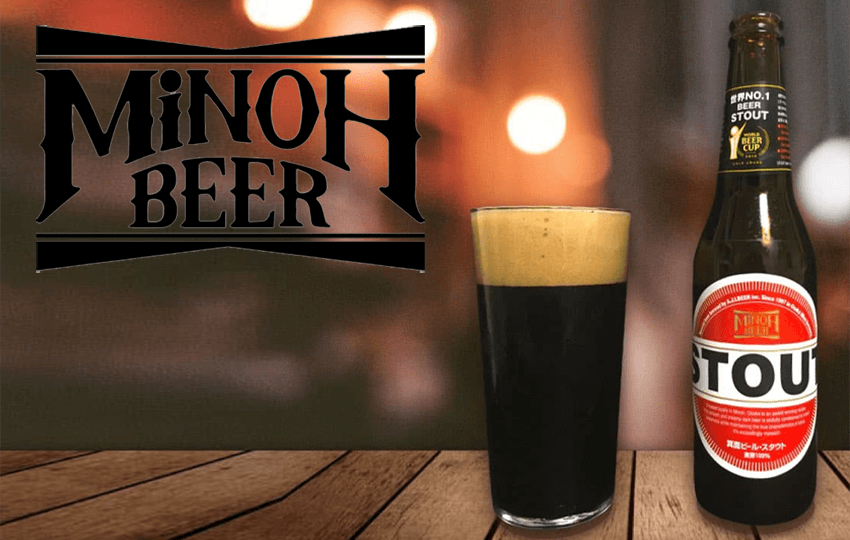

 株式会社ノリタケカンパニーリミテド
株式会社ノリタケカンパニーリミテド